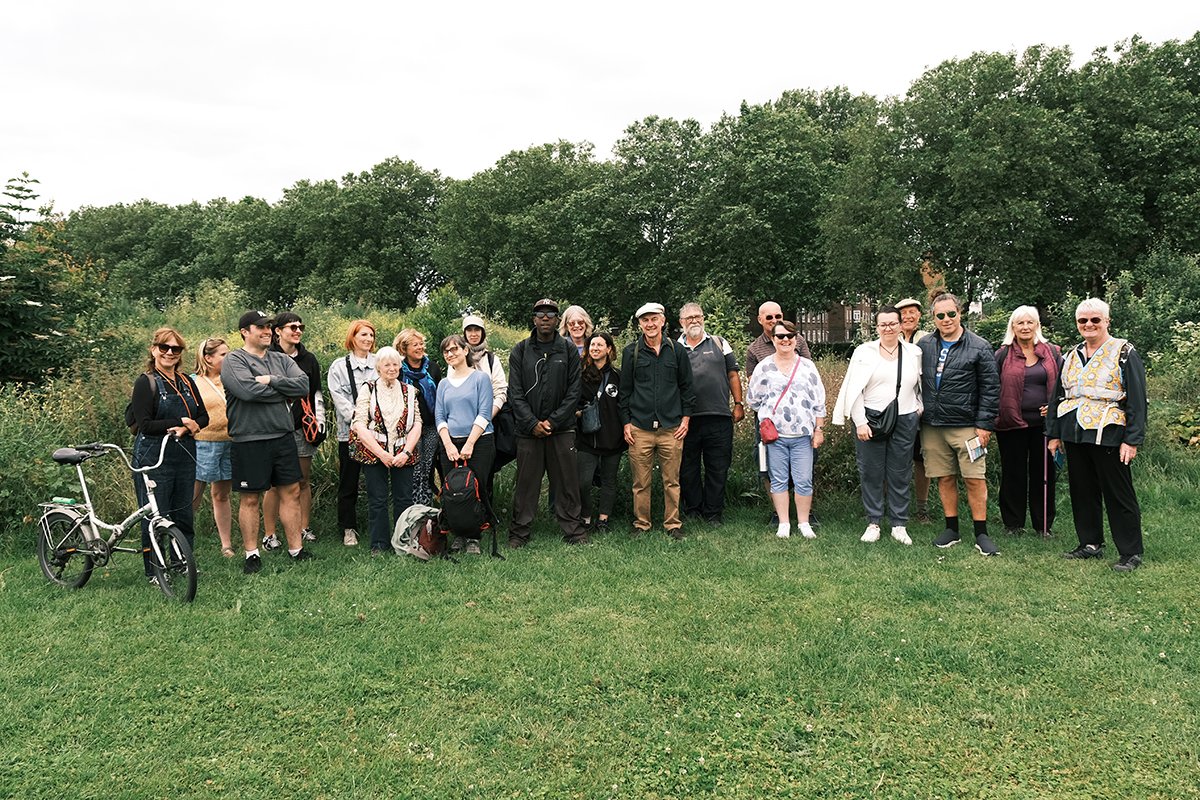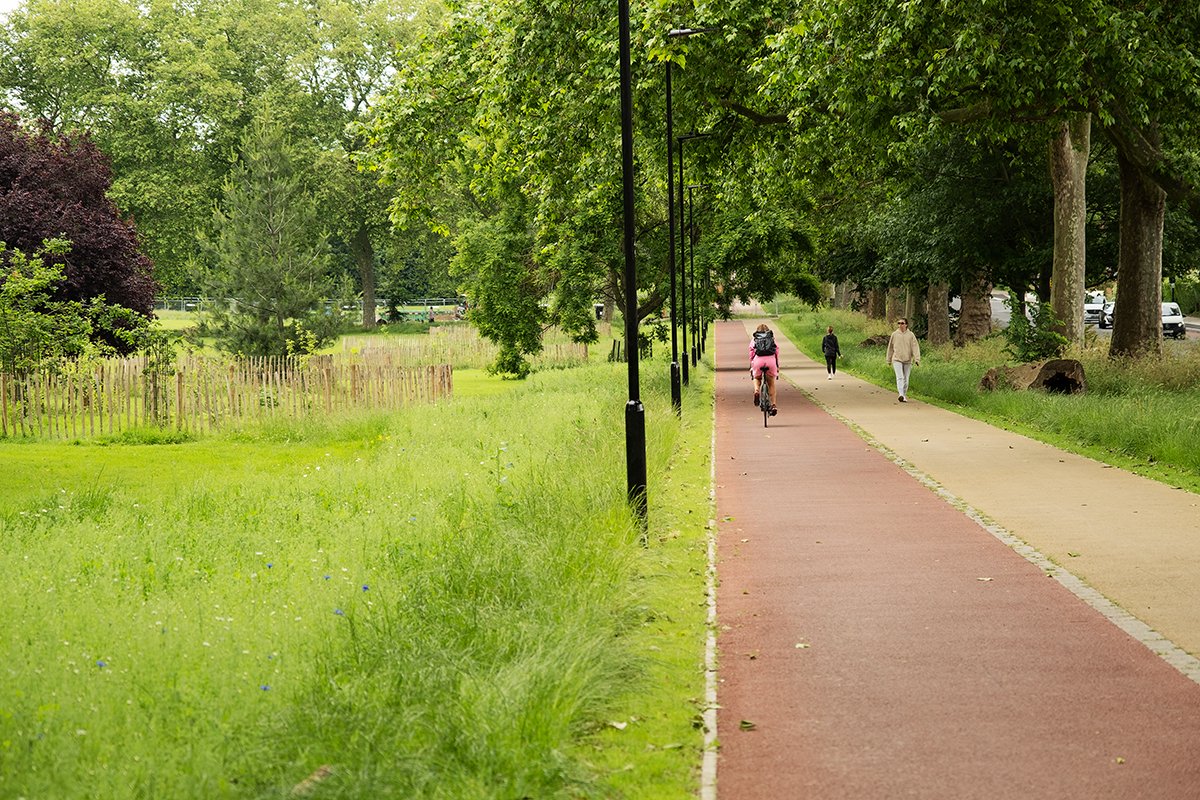Interview with Gerry Tissier: Hackney Buzzline Project Manager & Community Ecologist
In this insightful interview, we sit down with Gerry Tissier, the Project Manager for The Hackney Buzzline, to explore his day-to-day responsibilities and the impact of his work on local communities and pollinators. As the driving force behind this innovative project, Gerry shares his experiences liaising with partners, developing revenue streams, and conducting ecological surveys. He highlights key findings, such as the remarkable pollinator diversity in Hackney's green spaces, and offers a glimpse into the project's future. Join us as we delve into the challenges, achievements, and future plans of The Hackney Buzzline.
Can you describe your day-to-day responsibilities as the Project Manager for The Hackney Buzzline?
As project manager I am responsible on a day to day basis for liaising with the Hackney Buzzline's many partners - local schools, residents & community organisations, Hackney Council (Parks and Housing departments) and national partners like the Bumblebee Conservation Trust and Butterfly Conservation, and with our Postcode Gardener, to agree, develop and plan delivery of each of the Hackney Buzzline's 15 planting/habitat creation projects. I am also responsible for monitoring and evaluating the impact of these projects and feeding that into a learning cycle to improve delivery and impact. I am developing additional revenue streams for the Hackney Buzzline - so far this has included forming a partnership with a gardening CIC to provide pollinator-friendly gardening maintenance service to two clients and the development of an ecological evaluation service to another client. I am responsible for gathering, editing and publishing social media content (photos, reels, copy) to promote the Hackney Buzzline and securing the necessary permissions for this. As Community Ecologist a good proportion of my time is spent carrying out pollinator surveys on Hackney parks and on the sites we are working on, photographing and identifying the species I find and entering the data I collect on national survey schemes, i-record and excel spreadsheets. This is helping build a more comprehensive picture of the pollinator diversity on the Hackney Buzzline and the impact of our activities on it. Lastly, I am working with a junior ecoteam I set up at Kingsmead Primary School.
How do you monitor and assess the impact of The Hackney Buzzline on local communities and pollinators?
We are developing this. In the first two months of the programme we worked with 160 children and 30 adults. We are piloting child-friendly questionnaires to get insight into how our sessions are helping children connect with, learn about and have positive attitudes to nature around them and improve their wellbeing. I am carrying out three types of pollinator surveys. 1: walking around each of the Hackney Buzzline parks every week during the survey season (April-September), to identify species present, record their numbers, what park habitats they are found in, and what plants they are foraging on. Fortnightly pollinator surveys of two of last year's postcode gardener projects with children (Concorde flower bed and Kingsmead Estate meadows) and monthly moth trap surveys at two current sites (Kingsmead primary school and Hackney School of Food).
What are some of the key findings from your ecological surveys conducted in Hackney's green spaces?
The pollinator diversity we have on our local parks is far more than most people realise. I'm recording bee, butterfly, moths and hoverfly species on the Hackney Buzzline parks as well as insects like dragonflies and wasps which prey on them. There are complex ecosystems going on under our feet. On average, I am discovering a new species (ie. one I haven't recorded before) every survey. This week I entered my 100th record on i-record. Many species haven't been recorded on the Hackney Buzzline (or even the local area) before or haven't been recorded for a long time. Some species are common, some uncommon, and some, like the Brown-banded carder bee, are nationally rare or have rapidly declining national populations and are Species of Principal Importance in England. In the parks, there are key plants (such as dandelions in spring and thistles in summer which are supporting high abundance and diversity of different bee and hoverfly species. Areas of grass that are being left to grow long are bringing back a range of meadow butterflies and helping to recover Hackney's pollinator heritage - wildflower meadows are also supporting a high diversity and abundance of pollinator species. The plants we selected for our postcode gardener projects are attracting specific bee species (eg: in spring we had hairy-footed flower bees visiting Pulmonaria flowers we planted with children at the Concorde Center and in summer wool carder bees visited the Lamb's ear we planted there).Our flower bed and mini-meadow area are also attracting a range of other pollinator species - bumblebees, solitary bees, butterflies, moths and hoverflies as well as damselflies and solitary wasps.
Can you share a memorable moment or achievement from your time managing The Hackney Buzzline so far?
Finding a Brown-banded carder bee (one of the UK's rarest bumblebees) queen on the Hackney Buzzline; seeing the 500m wildflower meadow strip we sowed with children in March along the cycle superhighway on Millfields Park bloom in July; going out onto Daubeney Fields to look for bees and butterflies with the Hackney Buzzline junior ecoteam we set at Kingsmead Primary School; seed-bombing a Nightingale Estate parklet with children from Nightingale Primary School - take your pick.
Brown-banded carder bee spotted on The Hackney Buzzline
What challenges have you encountered in managing this project, and how have you addressed them?
The main challenge is fitting all the pieces of the jigsaw together. It's a complex programme of activities made up of at least 15 projects - each of which have their own challenges and outcomes. We want to engage children and other residents in appreciating and learning about nature, helping to improve their environment and create pollinator-friendly flower-rich spaces of different kinds (eg wildflower meadows, flower beds, planters, parklets, gardens), which are attractive, sustainable (drought-tolerant, and low maintenance) and which we can show have a measurable impact of pollinator-diversity. We started with a simple model - building the Buzzline in three sections and mapping out five x 6 week projects a year for each. It hasn't worked out quite like that, the projects we can deliver across the length of the Buzzline depend on the opportunities and challenges at any one time and some projects are taking longer than 6 weeks and some less. I am are confident we can deliver the 15 projects but we are having to be flexible as to how we deliver them.
How do you engage with the local community to raise awareness and participation in The Hackney Buzzline?
So far we have built up relationships and are delivering projects and activities with: three primary schools and two nurseries along the route and three estate community gardening groups. We are raising awareness of our activities through social media and local press and directing people to the Hackney Buzzline page on the ecoACTIVE website where people can express an interest in getting involved. In autumn we will invite people to take part in bulb-planting activities. I have led two public walks along the Hackney Buzzline. We will develop further ways of getting involved as we develop the programme.
In your opinion, what has been the most significant impact of The Hackney Buzzline on the local ecosystem?
It's clear that the large grass meadow areas that we're creating with Hackney Council and Butterfly Conservation on the Hackney Buzzline parks are helping meadow butterfly species recover (I'm only finding them in these areas) while the pictorial meadows are supporting other types of pollinators like solitary bees and hoverflies. It's also apparent that these meadow areas are supporting a wider ecosystem by increasing the abundance of insects at the bottom of the food chain - for example, you can see dragonflies hunting in these areas and it would be great if someone wanted to look at how they are supporting vertebrates like grass snakes, hedgehogs, small rodents, birds and bats. I've also shown that even small habitat enhancements (e.g. small meadow patches, flower beds) significantly increase biodiversity (up to 22 x in one survey), attract specific pollinator species and create their own mini ecosystems and this supports a mounting body of research on this. The geographical area we are working in has a lot of green space but most of it is mown grass which is really species poor. The biggest and simplest impact we can make is by letting the grass grow and enhancing some areas with wildflowers. However, the more structural and habitat diversity we can create (creating grass meadows and pictorial meadows, letting wildflowers and scrub grow at the edge of parks, supporting food-growing and other planting in community gardens, ponds, parklets, shrubs and trees, etc,) across the landscape and the more people get involved with this in their own garden spaces, the more impact we will have on the local ecosystem.
North Millfields Park - a cycle and nature superhighway!
How do you see the project evolving in the next few years?
We can only go so far through funded project delivery. We can achieve so much more if residents get involved and start taking action themselves to help nature recover in their own gardens, streets, estates etc. But we want people to think not just about what they can do in their own garden but how that connects with what people are doing around them. Pollinators don't recognise the boundaries we put between gardens or parks and streets - they fly around looking for forage and nesting sites. The same goes for other animals. Frogs, toads and newts need a network of ponds to breed in. You can only support them by putting a pond in your garden if there's another pond nearby. Connectivity is key - we need to create social and ecological connectivity - the two are linked together. I'd like to see the project evolve by providing training advice and support to residents who want to take action and connecting them so they can act together for nature.
What advice would you give to someone looking to start a similar ecological project in their community?
Connect with like-minded people - talk with as many relevant people as possible.
Develop a realistic plan - think about the type and scale of the project and the resources you require to do this - do you want to do this on a voluntary basis or funded basis (which requires a far greater investment of time and energy).
Go for it - any action is better than no-action.





